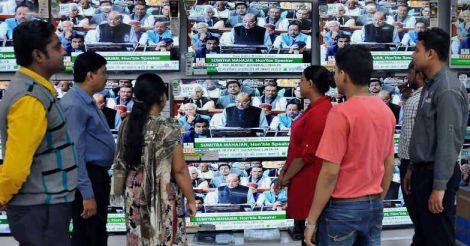Arun Jaitley's Budget proposals for 2018-19 appears very much like an election-eve exercise. The farmers have been promised more sops, and the corporate sector benefited with the lowering of corporate tax from 30 per cent to 25 per cent for companies having a turnover of up to Rs 250 crore. What the budget lacks is any clear direction.
It goes to the credit of the government that the disinvestment target was not only achieved, but even exceeded. But what was clearly missing is a clear route map for solving two pressing problems, namely solving the crisis on the jobs front, and saving the 55 per cent of the population involved in farming from financial distress.
Jaitley promised the farmers that they would receive minimum support price equal to 1.5 times the cost of production. The details of how this is going to be implemented are awaited.
Also, there was a promise in the Economic Survey that farmers' income would be doubled by 2022. This appears almost impossible going by the current growth pattern of the farm sector.
Average farm sizes in India are around 1.16 hectares, 52 per cent of farm land in the country remain unirrigated, and technology adoption in the farm sector is minuscule.
To add to the farmers' woes, there is a glut in farm production, a fall in price of commodities and a poor physical infrastructure. In this backdrop, it is difficult to visualize farm incomes doubling by 2022. The finance minister doubled the allocation for food processing from Rs 700 crore to Rs 1,400 crore, but this is insignificant for a country of India's size.
Agricultural production has hit a record with 275 million tonnes of food grains and 300 million tonnes of fruits and vegetables, but what is unsaid is that the efficiency of production is so low, that it takes 55 per cent of our population to produce this.
The large pool of youth in the country do not have much reason for cheer. The ambitious target made in 2007 to train 50 crore youth under skill development programmes in 13 years, was pared down in 2015 to train 40 crore youth by 2022.
In the budget, that ambition has now been reduced significantly to training 50 lakh youth by 2020. This is an alarming situation because between 2017 and 2025, 10 crore youth are expected to join the workforce in India, which will be one-fifth of the world's new workforce. Unfortunately, they are unlikely to receive training in industry-requisite skills.
A clear highlight is the proposal to offer healthcare protection to 50 crore people, and a proposal for a universal health coverage after seeing the performance of this scheme.
Rs 3,794 crore allotted to medium, small and micro enterprises in the form of capital support and interest subsidy is also a positive proposal, particularly because the vast majority of Indian firms fall in these categories.
(The author is a senior journalist)
Read more: Budget | Union Budget: exemption on interest income for senior citizens hiked to Rs 50K


























 People watch a live telecast of Union Budget 2018-19 session being presented by union finance minister Arun Jaitley, in Kolkata on Thursday. PTI Photo
People watch a live telecast of Union Budget 2018-19 session being presented by union finance minister Arun Jaitley, in Kolkata on Thursday. PTI Photo